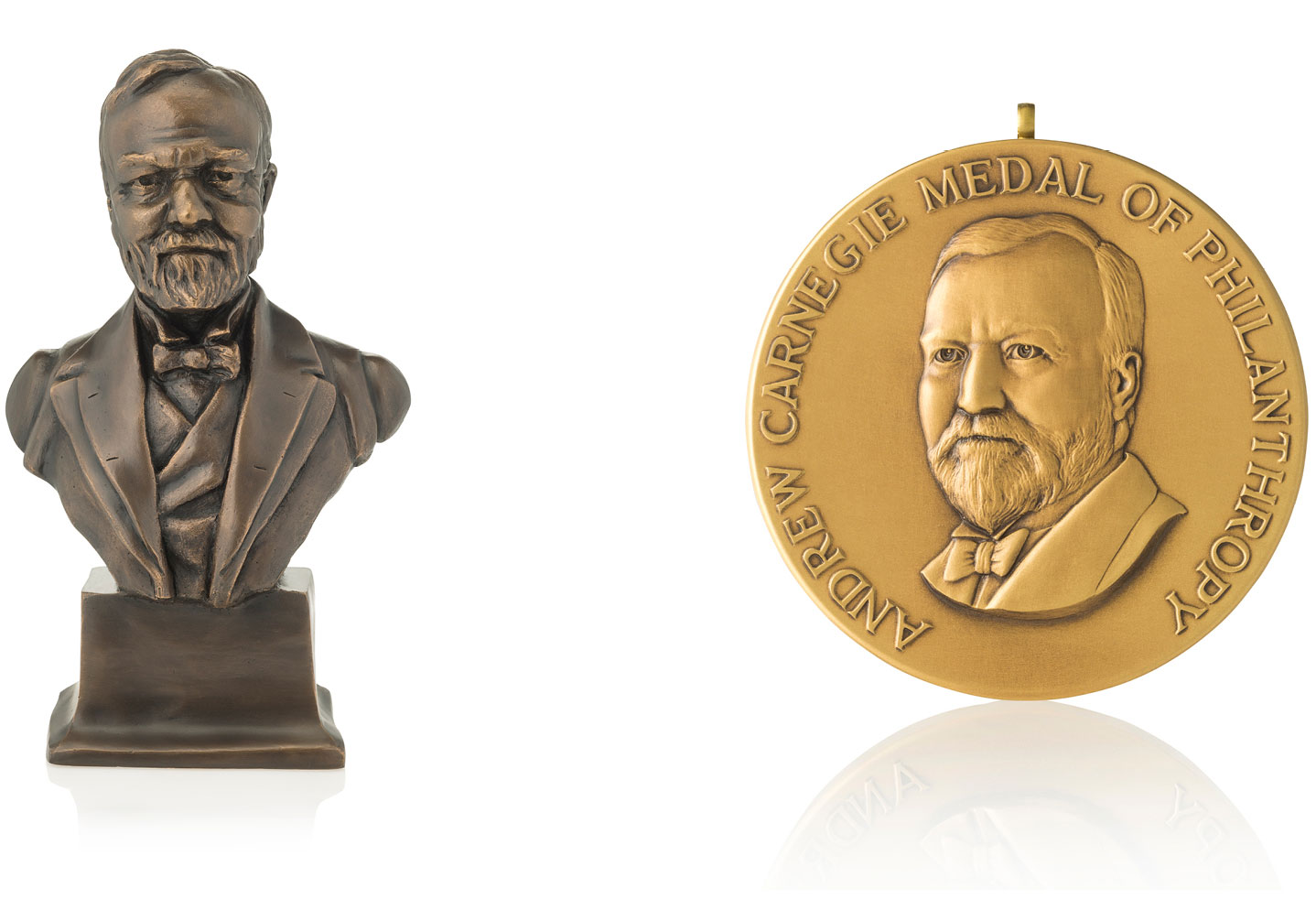FAQ
Who awards the Carnegie Medal of Philanthropy?
The Carnegie Medal of Philanthropy is awarded by organizations founded by Andrew Carnegie.
The selection committee is comprised of four members of the steering committee that organized the inaugural medal in 2001— Carnegie Corporation of New York, the Carnegie Endowment for International Peace, Carnegie Institution for Science, and the Carnegie Trusts for the Universities of Scotland — along with two additional Carnegie institutions, which rotate onto the committee each award cycle. William Thompson, great-grandson of Carnegie and former Chair of the Carnegie UK Trust, is honorary chair of the committee. Vartan Gregorian, President of Carnegie Corporation of New York, chairs the committee.
What is the criteria for receiving the Medal of Philanthropy?
First, medalists must have a vision of philanthropy that reflects the ideals and breadth of Andrew Carnegie, the man the medal celebrates. The work of the philanthropist must also have a sustainable track record of giving. Finally, medalists must have made a significant impact on a particular field, nation, or group of people, either nationally or internationally.
What do recipients of the Medal of Philanthropy receive?
Each recipient receives a bust of Andrew Carnegie — an original work of art cast in bronze and created especially for the award — and a bronze medal.

